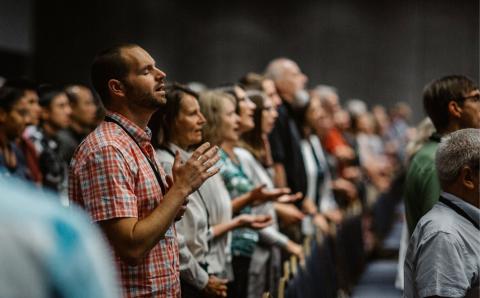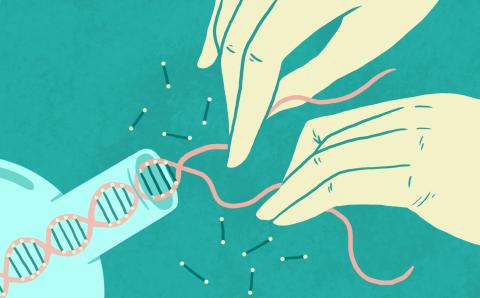It’s the most recognizable symbol of the Christian faith—the cross of Jesus Christ. Crosses are hung on necklaces, embroidered on sleeves, tattooed on arms, faded into hairstyles, painted on fingernails, branded on belt buckles, stuck on car bumpers, mounted on church steeples, engraved on tombstones, printed on coffee mugs, and posted on Instagram. Crosses are everywhere. Yet ironically we struggle to know why Jesus had to die on a cross.
The Assyrians were the first to publicly execute people, impaling them on swords. The Romans continued the practice by adding a crossbeam and nailing people to the cross by their hands and feet. Any empire that publicly executed people—Babylonian, Assyrian, Persian, Roman—did so to punish criminals and insurgents and to deter others from revolting.
So did Jesus have to die on a cross, beaten and humiliated by Roman soldiers, because he was a criminal? No. In fact, the opposite is true. Followers of Christ are redeemed “with the precious blood of Christ, a lamb without blemish or defect” (1 Pet. 1:19). This description of Christ helps us understand why he was crucified and sends us back to the Old Testament, to a time of slavery, hardship, and salvation.
The people of Israel had been slaves in Egypt for more than 400 years. The pharaoh who replaced the ruler of the time of Joseph did not look favorably upon God’s people. He began to oppress the Hebrews, and they cried out to the Lord for deliverance. The Lord heard their prayer and raised up Moses to be Israel’s deliverer. After the pharaoh refused to free the Israelites even after enduring plagues, God finally instructed Moses to tell the people to slaughter lambs and paint the blood on their doorposts.
Jesus Christ fulfills the roles of both Moses and the lambs of the Exodus story. Just as Moses was raised up to bring God’s people out of slavery in Egypt, so Jesus Christ was raised up to bring God’s people out of captivity to sin and death. The only way God’s people could be set free from their captivity was through the sacrifice of a spotless lamb a substitute to atone for the sins of each household. Jesus Christ is the Lamb of God who takes away the sins of all who belong to the family of God. He became our substitute, giving his life on the cross for the forgiveness of our sins.
Jesus Christ died not because he was a sinner, but because he was sinless. The reformer Martin Luther called the death of Christ “the great exchange.” Through his death and resurrection, our Savior took upon himself the penalty of our sins. In exchange, God placed on us the righteousness of Jesus Christ: “God made him who had no sin to be sin for us, so that in him we might become the righteousness of God” (2 Cor. 5:21). Jesus died for us and was raised up to new life so that we can be forgiven of our sins, rescued from captivity, and set free to express our gratitude for all that Jesus has done.
Yes, the cross of Christ can be found everywhere. But more importantly, it is imprinted on our hearts, souls, and minds.
About the Author
Felix Fernandez is pastor of South Kendall Community Church Miami, FL.








